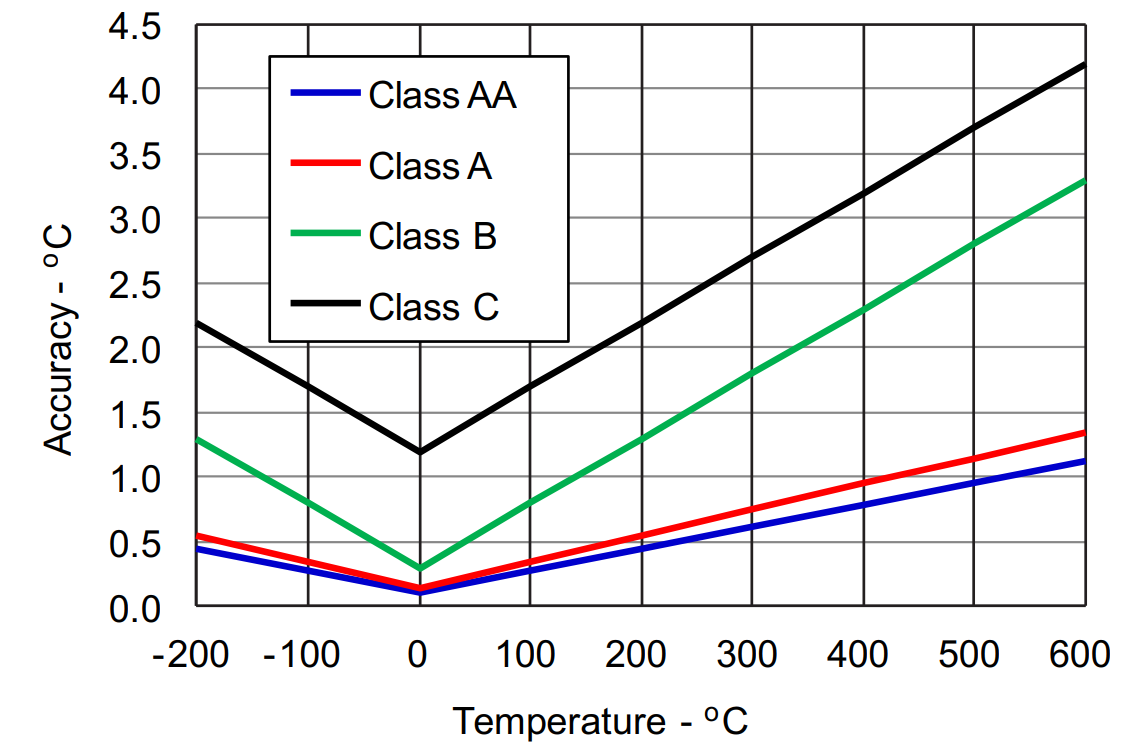SNOAA67A May 2021 – June 2022 TMP116 , TMP117 , TMP1826 , TMP61 , TMP63 , TMP64
1.2 RTD Tolerances and Accuracy
There are four tolerance classes specified in DIN/IEC751:
| Class | Tolerance |
|---|---|
|
AA |
± (0.1 + 0.0017·|T|) |
|
A |
± (0.15 + 0.002·|T|) |
|
B |
± (0.3 + 0.005·|T|) |
|
C |
± (1.2 + 0.005·|T|) |
These tolerance classes also represent the interchangeability of a detector. Should a detector become damaged, good interchangeability assures that the replacement sensor delivers the same readings under the same conditions as the predecessor. Another important criterion for selecting a temperature sensor is the long-term stability. Great stability produces little output signal drift over time, thus reducing the frequency of costly calibrations. Depending on the application requirement, today’s RTDs can provide long-term drifts from as little as 0.003°C/year up to 0.01 and 0.05°C/year.
RTDs are considered to be amongst the most accurate temperature sensors available. In addition to high accuracy, they offer excellent stability, repeatability, and high immunity to electrical noise. However, for each class, the accuracy varies as the temperature changes. Figure 1-4 shows the accuracy of different classes of RTDs.
 Figure 1-4 Accuracy Classes for RTDs.
Figure 1-4 Accuracy Classes for RTDs.